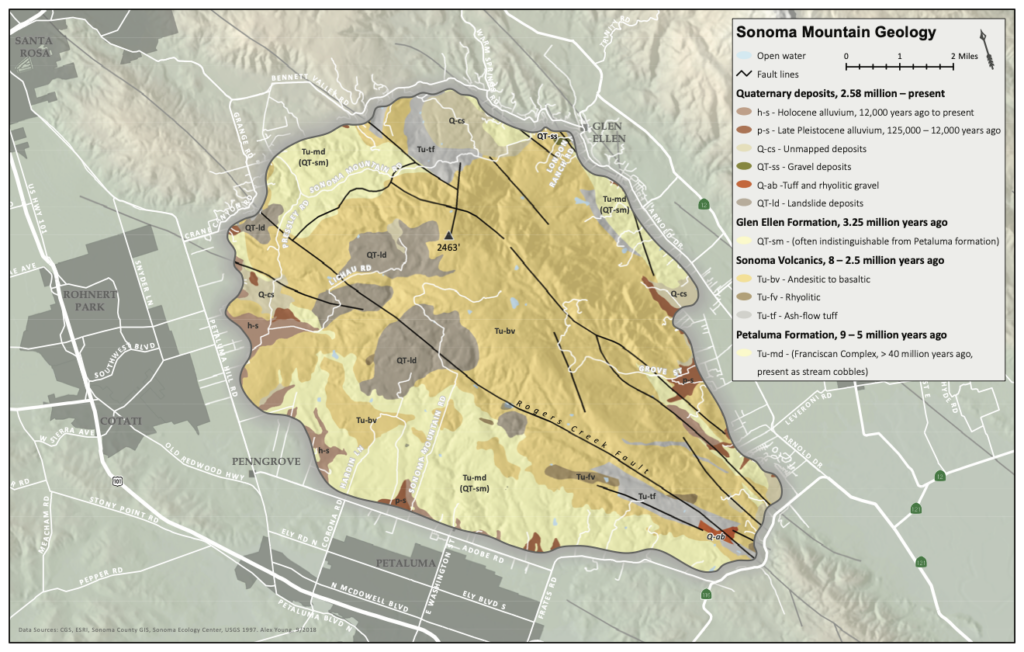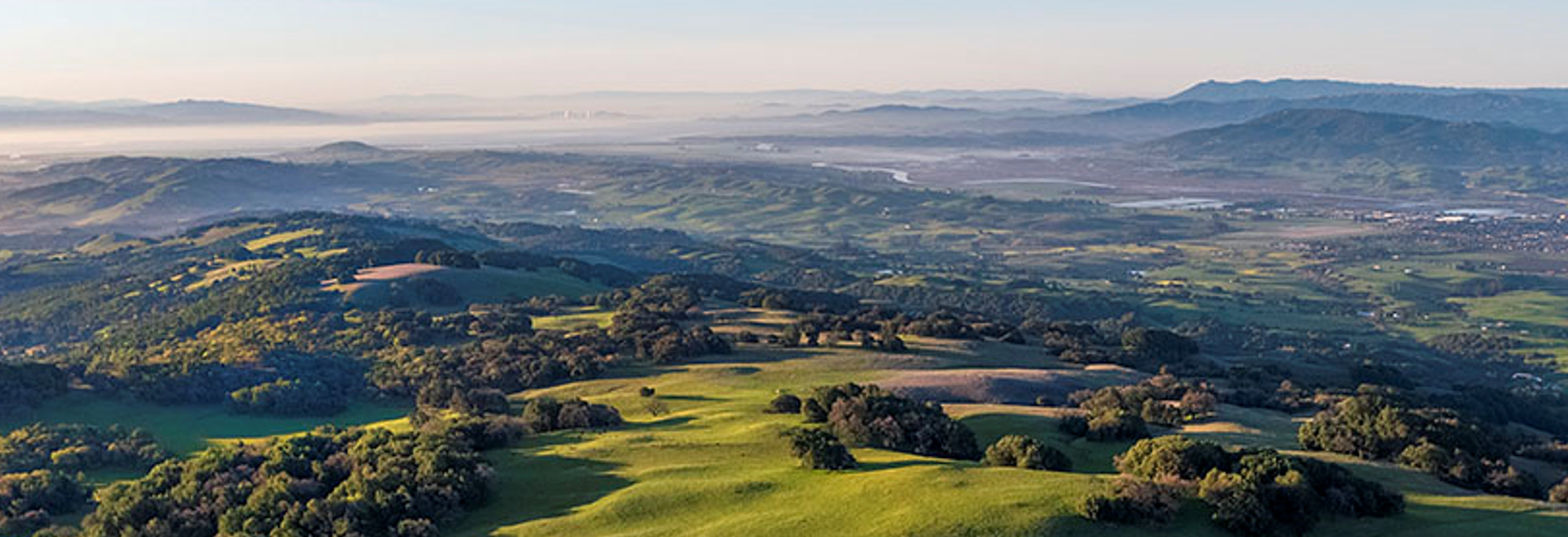Sonoma Mountain is one of the most prominent landforms in the North San Francisco Bay Region of California. it lies approximately 50 miles due north of San Francisco, in southern Sonoma County, roughly equidistant from the cities of Santa Rosa (to the north), Rohnert Park and Cotati (to the northwest), Petaluma (to the southwest) and Sonoma (to the east).
Actually, it should be called the Sonoma Mountains, a 25-mile long ridge bordered on the east by Sonoma Valley, on the west by the Petaluma River Valley and the Cotati/Santa Rosa Plain and on the south by San Pablo Bay. The north/south-oriented ridge is only about nine miles wide on its east/west axis.
The mountain reaches a little over 2,200 feet above sea level at its peak. When viewed from the south it can appear as a steep-sided plateau.
Several seismic faults border and cross the mountain, most notably the active Rogers Creek fault, which is subparallel to the axis of the range and also crosses it obliquely from the southeast to northwest across the southern portion. The Tolay fault occurs along the western side of the range. Other un-named faults and the Bennett Valley fault also border the range.
Sonoma Mountain contains an accumulation of relatively recent (four to nine million years old) sedimentary and volcanic rocks, typically characterized by vast exposures of the Jurassic-Cretaceous Franciscan Complex.
Geologic maps indicate that the mountain consists predominantly of volcanic rocks from the Sonoma Volcanics, with a subordinate amount of sedimentary rocks of the Petaluma Formation.
~From a summary by James R. Allen, MS, PG Geology, Earth and Environmental Sciences, California State University, East Bay

Map by Alex Young: click to seee larger map.


